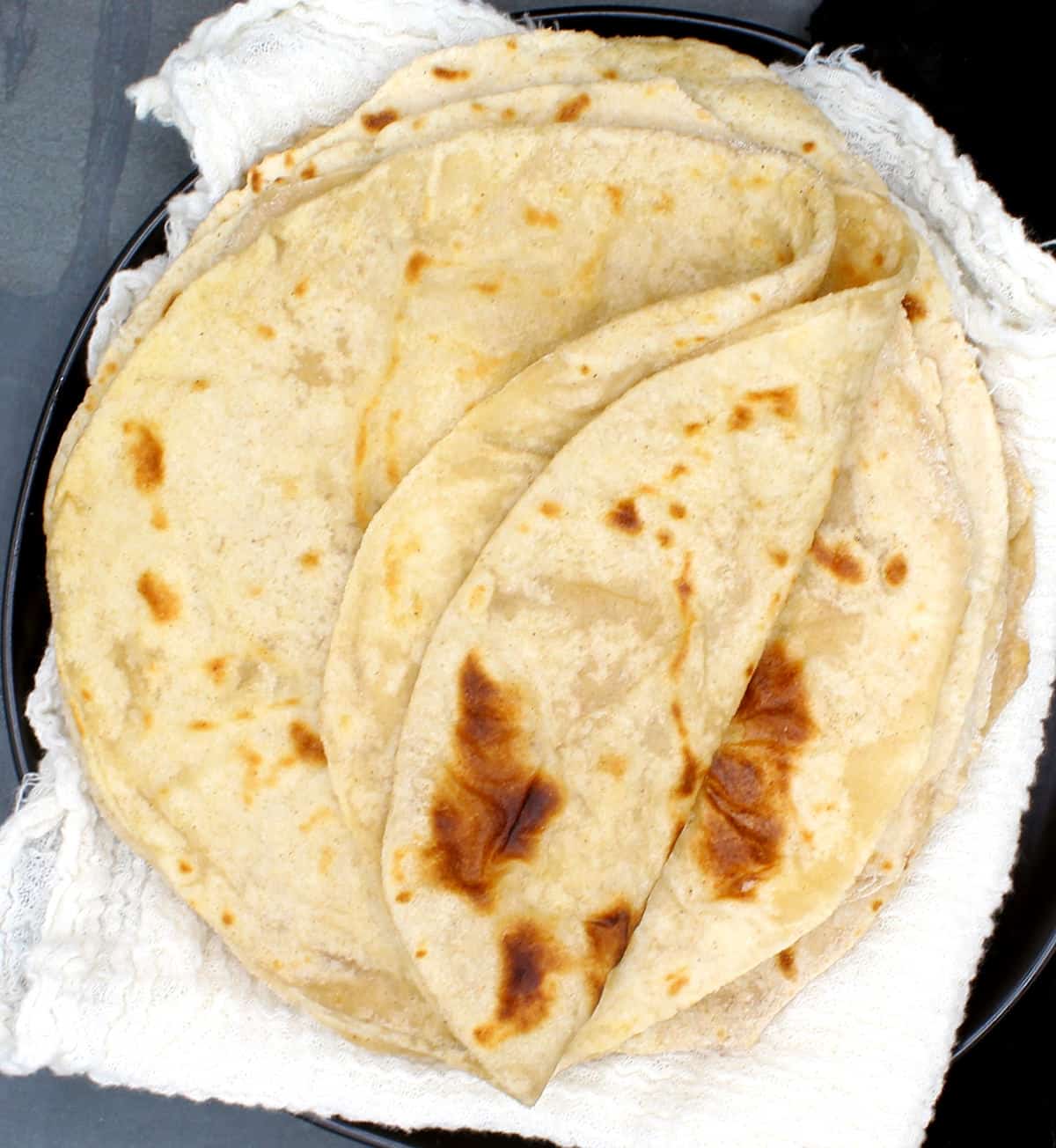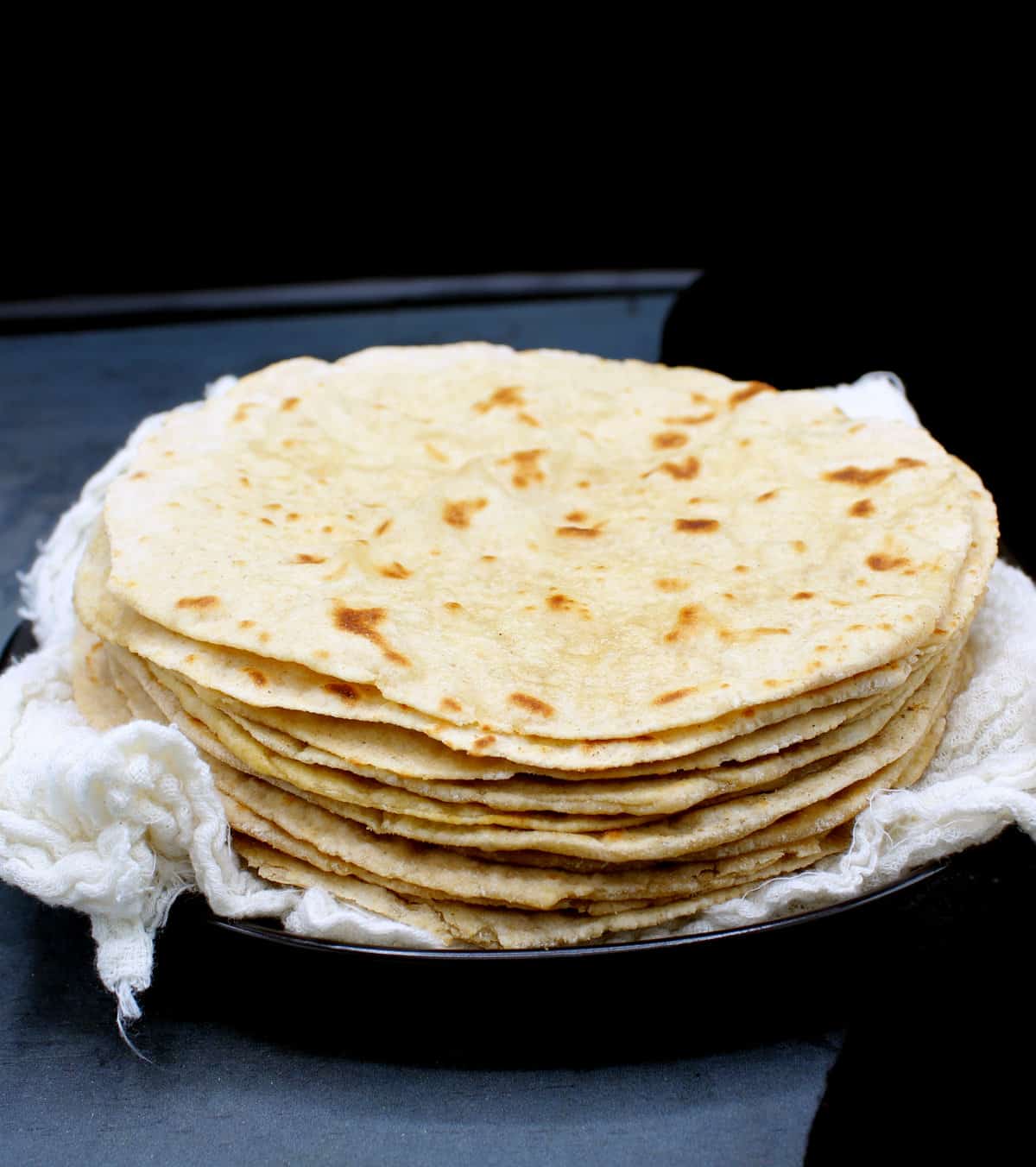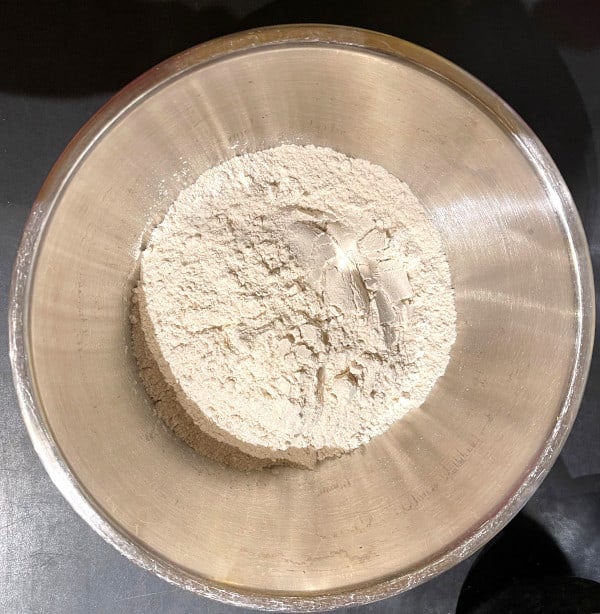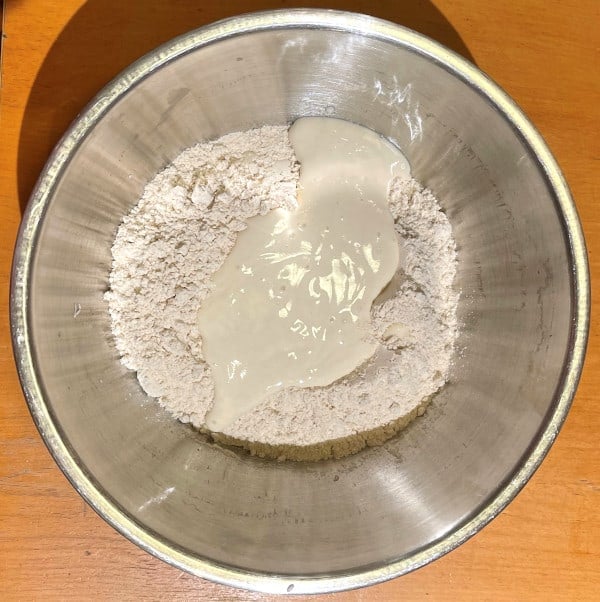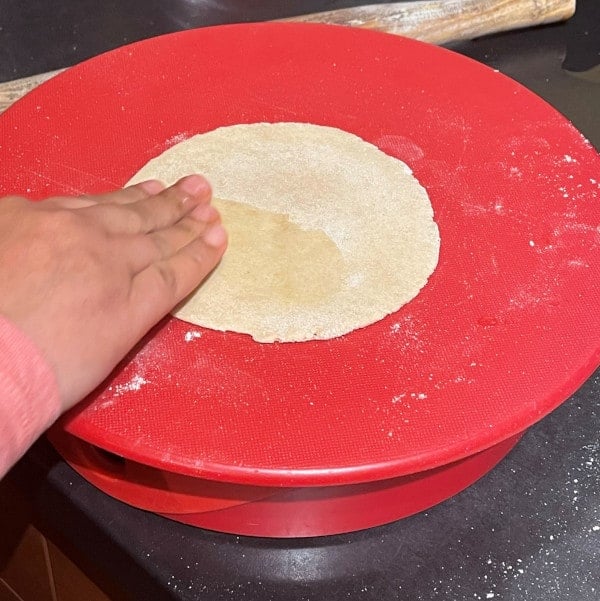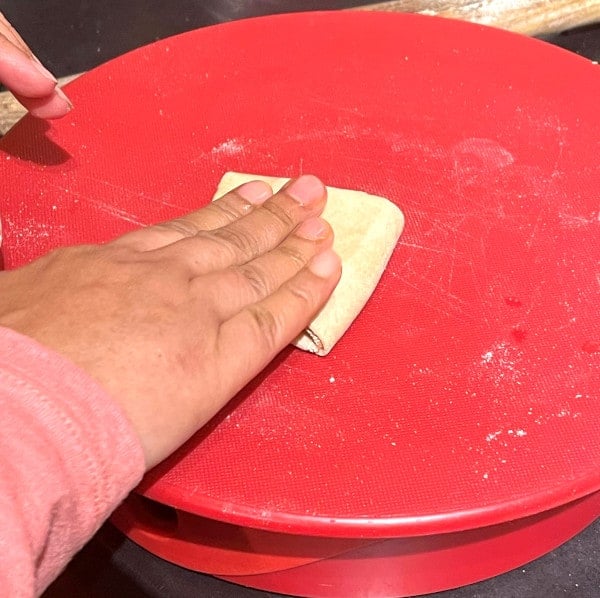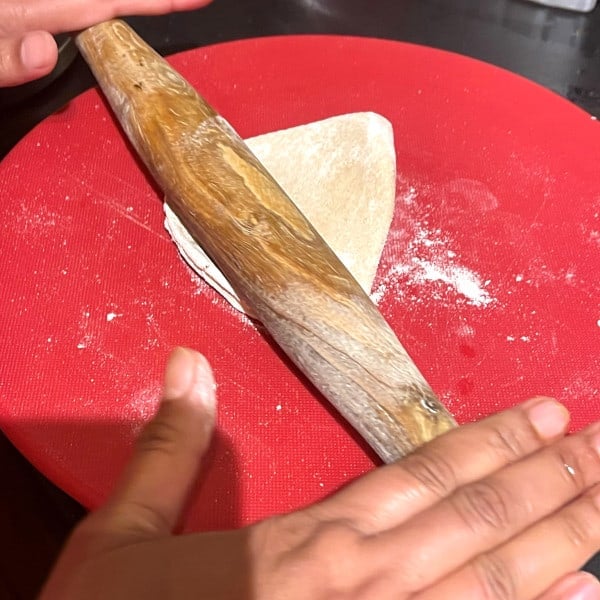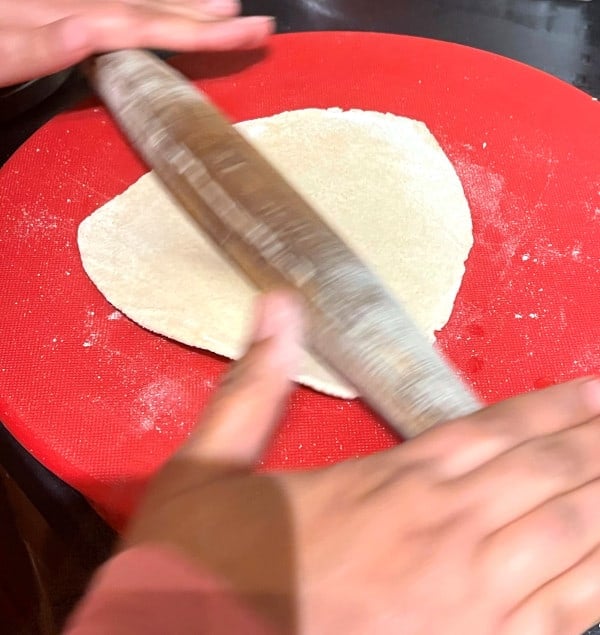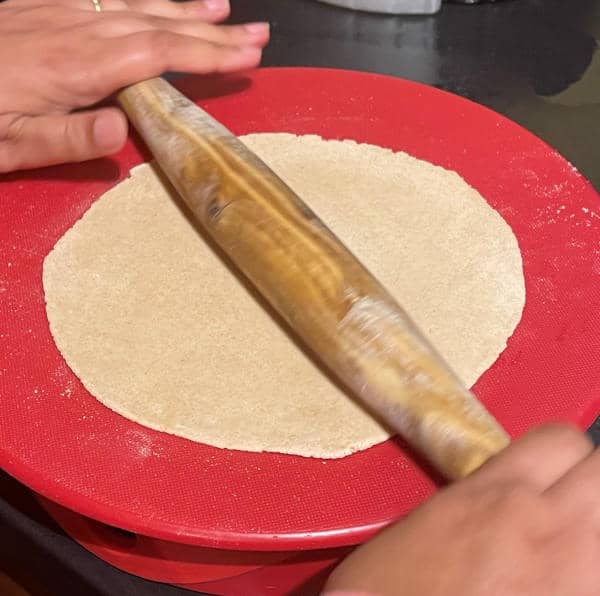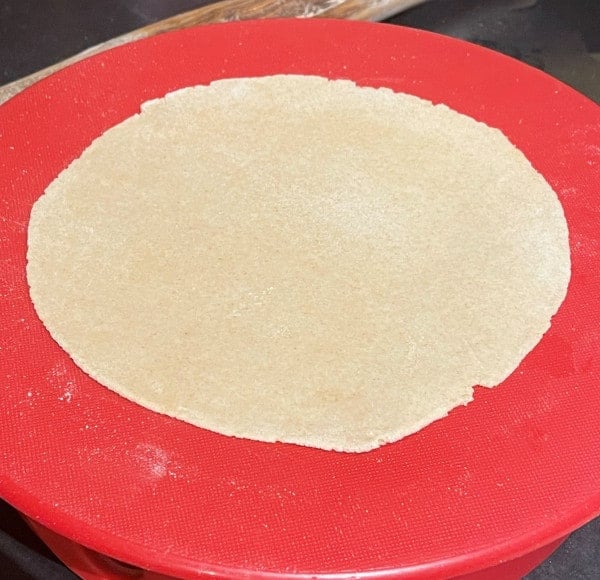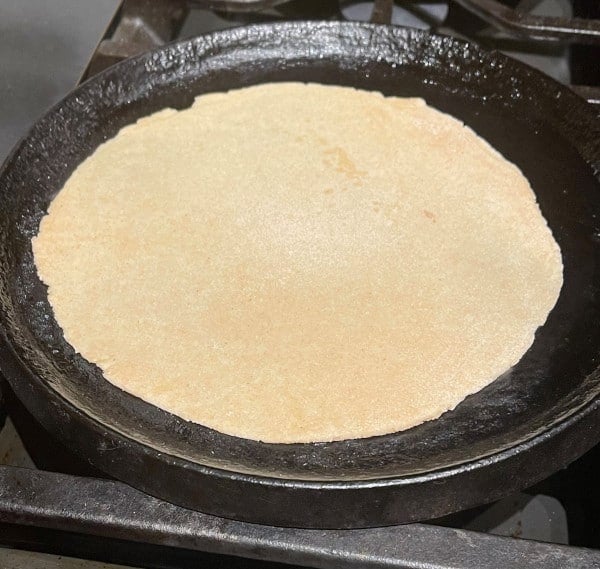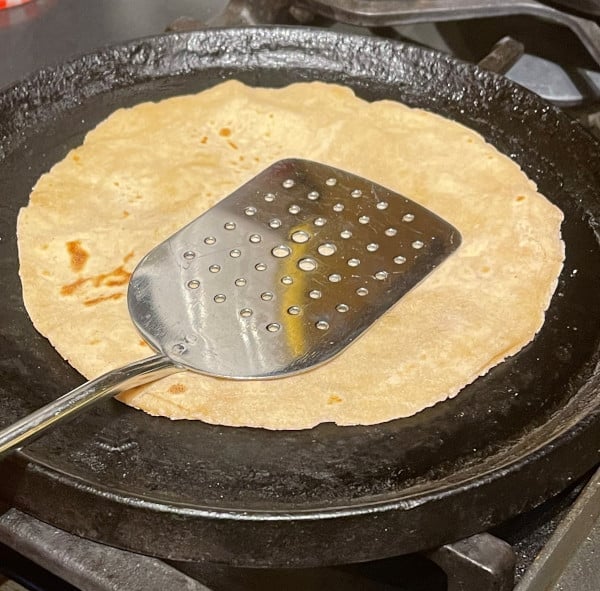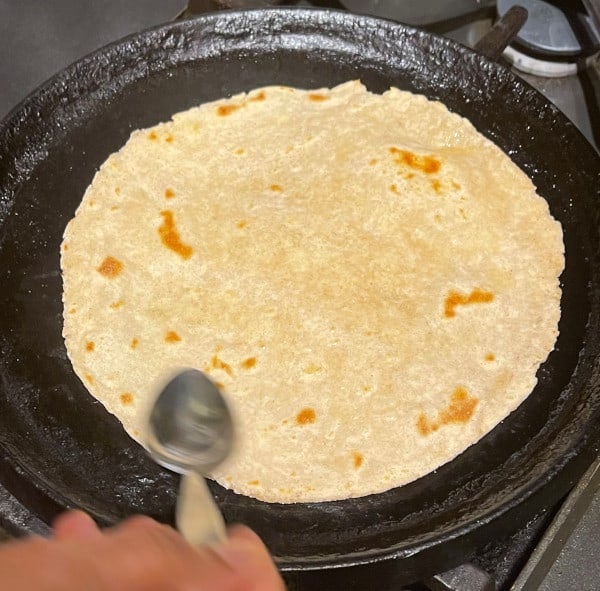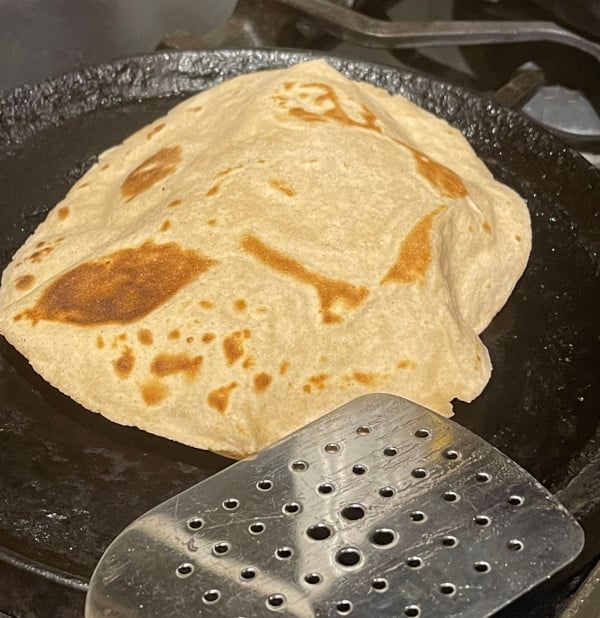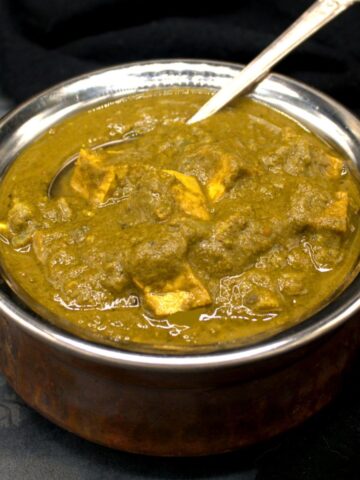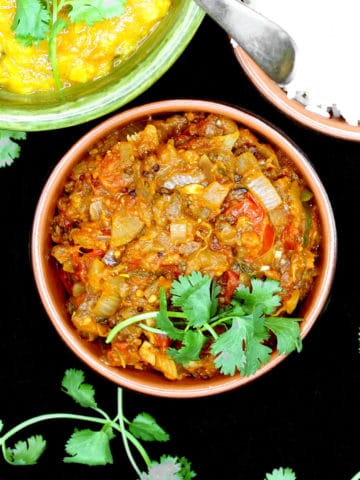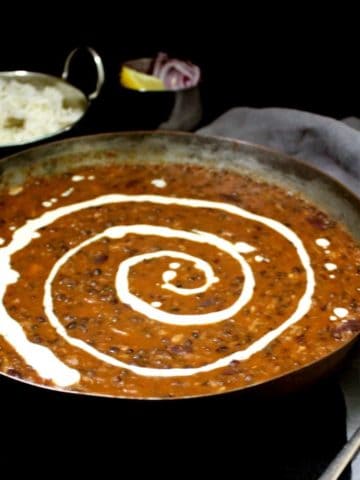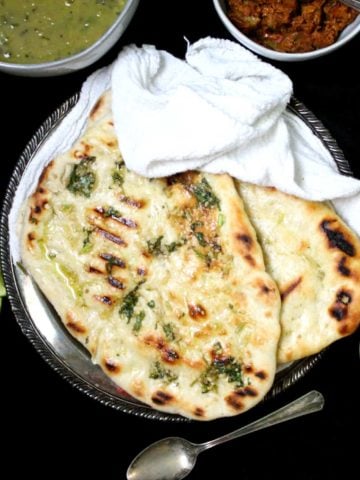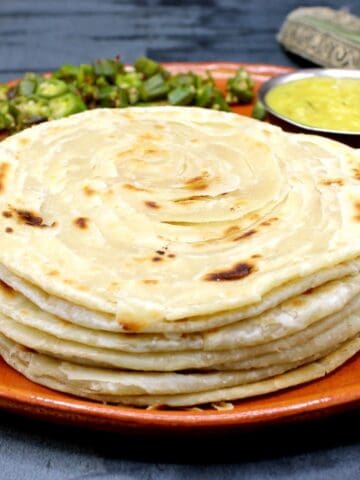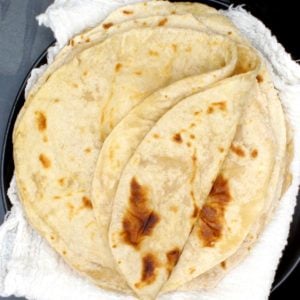You might also like these recipes for a classic Indian roti, besan roti and high-protein roti. Roti, the popular Indian flatbread, is part of nearly every Indian meal, homemade or at an Indian restaurant. While it is almost impossible to gild the deliciousness of this simple, unleavened bread, here’s one way to enhance its nutritious qualities: a sourdough roti. You will need a sourdough starter for this recipe, and if you don’t have one already, why don’t you? Yeast shortages last year led many home cooks to get on the sourdough wagon, which was wonderful, because sourdough is really one of the most amazing things you can put into your mouths and your bellies. It not only creates baked goods that are incredibly tasty, but the starches in these foods are pre-digested by probiotic bacteria, making them better for you. I’ve been guilty of using this blog as a soapbox to preach the amazing qualities of sourdough for many years now, and it thrills me when you write in with your own adventures of baking with sourdough. Like many of you, I am always looking for things to do with the discard from my sourdough starter, George, because I hate throwing it away (this is the portion of the sourdough you throw away when it’s time to feed the starter). I can’t collect enough recipes to use it in. I’ve blogged many recipes using sourdough discard before, but one of my favorite ways to use the discard is in roti or chapati. I began recommending the use of sourdough discard in rotis and naans and parathas to my Indian readers asking for ideas on what to do with sourdough discard. The more I used it in Indian flatbreads, the more impressed I was. Now I rarely make rotis without sourdough, they’re that good.
Why add sourdough discard to rotis
A roti is usually unleavened, and it is delicious that way. That also makes it particularly suitable for sourdough discard because you are not looking for the discard to help give your dough a rise, as you would need it to if you were making any other bread. The discard, however, adds amazing flavor and also helps make the rotis softer, which is perfect. You don’t have to wait longer than a half hour to make the rotis after you’ve kneaded the dough, but you can definitely refrigerate the dough overnight or even leave it in the refrigerator a couple of days before you make the rotis. This will have the added benefit of giving the beneficial bacteria time to digest the starches in the dough. Do keep in mind this will also develop the sourdough flavor further, so if you don’t want a strong sourdough flavor in the rotis you should make them right away. (Pooris are great with sourdough discard too. If you let the dough, with discard added, stand for a few hours, or even overnight, you will get the crispiest pooris ever. Jay guzzles them down all by themselves.)
How much discard should you add to the roti dough
This, once again, depends on how much you love the flavor of sourdough. Check to get new recipe updates by email.
You can add as little as a quarter of a cup of sourdough discard if you want barely any flavor at all, or as much as a cup. I usually use half a cup for two cups of flour. For hardly any sourdough flavor make the rotis no more than 30 minutes after kneading your dough. For a more developed flavor let the dough stand longer, even overnight, in the refrigerator.
How to make sourdough roti
(For a deeper dive into how to knead the flour and roll out rotis, read my comprehensive and step-by-step “how to make roti” recipe post and watch the accompanying video).
Knead the dough: Place the flour in a bowl, make a well in the center, pour in the sourdough and salt, and then mix with your fingers until the sourdough is evenly dispersed. Knead the flour into a stiff but pliable dough, trickling in a little water at a time. If the dough gets too soft you won’t be able to roll out the rotis easily, but if it’s too stiff it will crack, so strike a happy medium. Rest the dough: You should rest the dough for about 30 minutes after kneading. If you want to wait longer put it in the refrigerator. Shape the rotis: Divide the dough into about 16 balls. You have two options after this. You can just roll out each ball into a circle about six inches in diameter, like you would a tortilla, and that’s definitely a better option for beginners. But if you want to get a little more adventurous for the softest rotis you will ever eat, shape them like I–or any Maharashtrian–would shape them: in the style of ghadichi poli, or a folded chapati. This is a technique where you apply a bit of oil to a disc of the roti dough with your fingers or a brush, fold it over, brush on a tiny bit of oil again, and then fold once more into a triangle. Then roll out the roti, shaping it as best as you can to create a circle about six inches in diameter Bake the rotis: Once you’ve shaped the rotis, you need to bake them on a griddle. Heat a griddle, preferably a cast iron one or a non-stick one, over medium high heat. Place the roti on it and fip over once you see it begin to bubble up. Use a soft flour sack cloth or any soft towel or cheesecloth rolled into a wad to press down on the roti gently while also moving it around to make sure it gets cooked evenly. Be careful if you do this and don’t burn yourself. Flip the roti and brush on a bit of oil or spray a bit of cooking spray. Press gently on the edges of the roti this time with the towel or with a spatula to help it puff up. Once the underside is golden, flip again and cook until there are golden-brown spots on both sides. Store the rotis: The best way to store the rotis, as soon as you get them off the griddle, is to wrap them in a soft kitchen towel. You can use a tortilla warmer, but I’d still advise lining it with a towel that will absorb any steam as it rises from the hot chapatis, keeping them soft and warm.If you want to store the rotis for longer, keep them refrigerated in an airtight container for up to three days. Warm on a griddle or in the microwave before serving.
More Indian flatbread recipes
Recipe card
